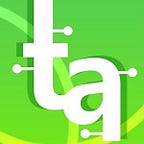Hieroglyphics Translator to Simplify Decoding of Ancient Egyptian Script
The images and writings of ancient Egyptian script called the Hieroglyphic script, have always managed to capture people’s attention throughout the world. The script remained the first to be used by the ancient Egyptians in writing their language and employs characters in the form of pictures. The individual signs that can be read as pictures, or as symbols for sounds are called hieroglyphs.
Over the time, it was often known as “sacred carvings”. Due to lack of knowledge, the hieroglyphic writing was later lost. Though several attempts were made to decipher the script writings and images, not much of the progress was seen in the field. Until recently, Google launched hieroglyphics translator that finally put an end to the long-lasting practice of going through several books to translate the ancient language.
The hieroglyphics translator called Fabricius is seen as a fastest way to decode the Hieroglyphic script as it uses AI to analyse the Ancient Egyptian script’s images. Available in English and Arabic, Fabricius is considered the first Google Arts & Culture tool that provides an easy way to translates messages into hieroglyphics. It also offers its users the choice to share the translated files on social media and is seen as an open source to support the ancient languages’ future studies.
Now learning about the ancient language is not a tough task for the non-experts. The hieroglyphics translator through its interactive platform allows everyone to enhance their knowledge. Upon typing the messages in their own language on the translator, the users could easily get a hieroglyphic equivalent, which they can share on social media too.
In addition, the users can also draw their own attempt at an ancient hieroglyphic to check if it can be identified through Google’s machine learning technology. The hieroglyphics translator’s database is designed to help people to learn more about the ancient Egyptian heritage and culture. Imagining that hieroglyphics is the ancient Egyptian equivalent of ‘emojis’ is the easiest way to understand the form of writing.
By using Google Cloud’s AutoML technology, AutoML Vision, Fabricius allows its developers to easily train a machine to recognise all kinds of objects. The digital tool is available for both mobile and desktop and is divided into three sections — called ‘Learn’, ‘Play’ and ‘Work’ for a better understanding. A short six-step educational introduction is available for the users to learn more about the Egyptian hieroglyphs.
As for the first step, i.e. ‘Learn’, the users are allowed to trace a hieroglyph well enough for the machine learning to identify, where each drawing is compared to more than 800 different hieroglyphic symbols. The other tasks listed under the Learn section includes having to draw hieroglyphics from memory and restore badly damaged hieroglyphics well enough for the machine learning to be able to identify them.
The second option ‘Play’ allows users to translate words/messages/emojis into Egyptian hieroglyphics that can later be shared with friends and family, using social media channels. The rough translations are not always correct, as suggested by Google. The third option ‘Work’ is a desktop-only ‘workbench’ that uses Cloud ML to assist researchers with hieroglyphics translation. It requires an in-depth understanding of the translation process for hieroglyphs and is not suitable for mobile web browsers. The hieroglyphics translator coincides with the anniversary of the discovery of the Rosetta stone, which was an important clue that helped the experts learn to read Egyptian hieroglyphs in the early times. The launch of the digital tool clearly shows that the researchers are making every possible effort to preserve ‘hieroglyphics as a language’.
Originally published at https://www.thetecharabia.com on July 27, 2020.
